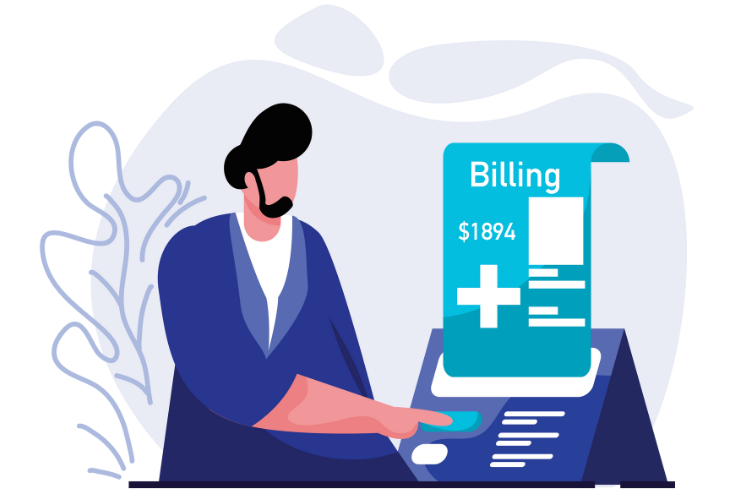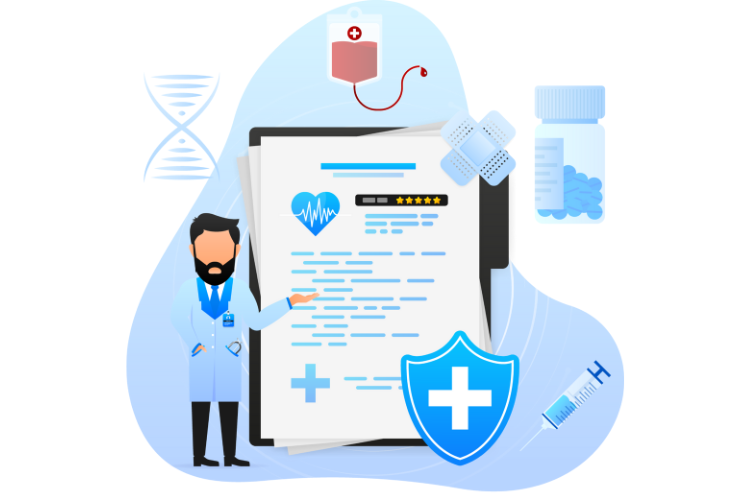
WHAT IS CHARGE CAPTURE IN HEALTHCARE?
When a patient first visits a healthcare clinic for an examination and treatment, the physician attending the patient must get the services properly documented. The documented services are then submitted to the insurance provider or another payee (which could be the patient) for payment. Charge capture is the process of accurately recording and documenting the services provided by a physician to a patient. It is also the method used by billing partners to convert claim codes for patient services into charges, ultimately generating revenue for their practice.

Charge capture goes by other names, including Charge Capture Revenue Cycle, Medical Charge Capture, and Healthcare Charge Capture. Charge capture is a fundamental requirement for any healthcare practice as it records services delivered that need to be charged. It plugs any gaps that may cause revenue loss. A smooth charge capture process helps increase the overall efficiency of the practice.
WHAT IS THE PROCESS OF CHARGE CAPTURE FOR PRACTICES?
1.PROVISION OF SERVICE
2. DOCUMENTATION OF SERVICE PROVIDED
3. ASSIGNING MEDICAL CODES
4. THE CHARGE ENTRY
5. REVIEWS AND APPROVALS
6. SUBMITTING CLAIMS
7. INCONSISTENT SUBMISSIONS AND DENIED CLAIMS
8. PAYING CLAIMS
CHALLENGES IN CHARGE CAPTURE PROCESS
Errors and Omissions:
Regulatory Changes:
Technological Challenges:
Staff Skill
Communication breakdown:
Policy changes:
BEST PRACTICES IN CHARGE CAPTURE

Staff training and education
Healthcare providers may consider regular training programs that ensure the staff dealing with charge capture, including the physicians who kick-start the process, are aware of the latest rules, regulations and requirements.
Get the coding right:
Assigning the right codes for the right services is absolutely critical. Practices can introduce a mechanism that cross-checks assigned codes before submitting claims. Staff training mentioned above can also help prevent mistakes in code assignments.
Proper documentation:
Since recording the medical services provided to the patient is the first step of charge capture, it’s imperative it is done accurately and efficiently. Having a clear system in place, which every physician and staff member knows about, helps. For example, by ensuring the services provided are documented in realtime, the service provider can prevent lapses, delays and inaccuracies.
Technology:
While technology features in the challenges around charge capture, it is also a problem solver. Electronic recordkeeping can help streamline the entire process, with checks and balances being part of the system itself so that they help prevent discrepancies. Electronic recordkeeping is a good way of making sure that no unwanted errors creep in.
Conducting audits:
Conducting regular system audits can help identify holes in the system before they become a problem. Having this in the organization calendar means staff are always aware and prepared to collect the necessary documents and complete the processes as designed
Regulatory checks:
Practices can introduce processes to ensure they are in compliance with regulatory guidelines relevant to their industry.
Setting targets and looking inward:
By setting targets for itself, the practice has a defined goal towards which it works. Each practice is different. While there are common systems and steps that can help most practices, each has its own set of challenges that may be unique to practices of a particular size, in a specific location, or area of specialization. Conducting an internal review will highlight which targets were not met and why. This allows the practice to find solutions for their challenges.
BENEFIT OF OUTSOURCING THE CHARGE CAPTURE PROCESS

Assign work to specialists:
Certain companies that provide charge capture services work with specialists and experts who do the same job day in and day out. These experts are aware of common issues affecting the charge capture process. They know how to deal with exceptional circumstances that they may have experienced while working with different service providers. Using these specialists means expertise is available to you, allowing your practice to benefit.
Cost savings:
Paying an outsourcing company may seem expensive. But it leads to savings in the medium or long term. Outsourcing capture charge means your practice will not have to hire specialized staff, purchase expensive technology, or conduct regular training exercises in the same manner as it would have to if the entire operation was being conducted in-house.
Reduced staff concerns:
With staff focusing on their core jobs, they are more motivated and dedicated to their job. It also reduces the chances of errors as staff isn’t expected to do something beyond their original scope of work.
Technological advantage:
Charge capture specialist companies are set up to provide expert service. Consequently, these companies update their software and processes regularly. This, in turn, means that they operate with maximum efficiency.
Fewer rejections and denials
A natural progression of improving the entire charge capture process is that your practice will benefit by receiving payments from insurance companies faster, sooner, and more efficiently.
Managing high volumes:
Sometimes, a practice may see higher volumes of patients than other times. With more work and the same number of staff, this affects the overall efficiency of operations. By working with an outsourcing company, the amount of work to be completed in-house is more manageable.
Reporting and analysis:
Outsourcing companies can be directed to provide specific records or reports so you may better understand your own practice. By having an in-depth view, you can make informed decisions that have a positive impact on the practice.
Regulatory compliance:
Falling foul of regulators is any medical practice’s worst nightmare. By working with an outsourcing company, your practice will get updates on the latest amendments to regulations, medical codes, etc.
Each of the above advantages directly impacts the efficiency and operations of the healthcare practice. They contribute towards better revenue generation and ensure a healthy bottom line – what every medical practice aspires for.
CONCLUSION
Charge capture is an integral part of a healthcare practice. It is a separate area of specialization that requires experts with the right skills and experiences to carry out tasks.
While healthcare service providers and practices are free to carry out charge capture activities in-house, it comes with its own set of challenges and difficulties. By outsourcing the critical function of charge capture to specialized organizations that are dedicated to this task, healthcare providers are not only making an investment in the growth and success of their practice, but they are also making an investment in their own peace of mind.


